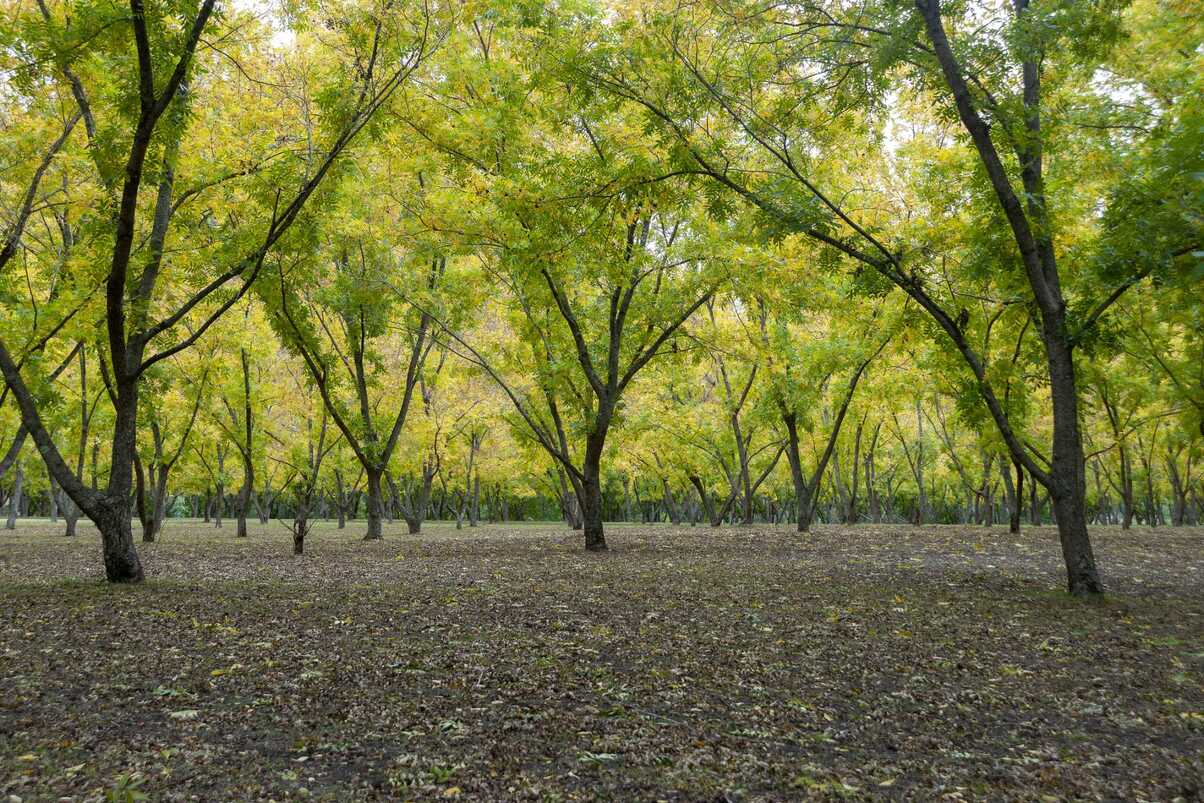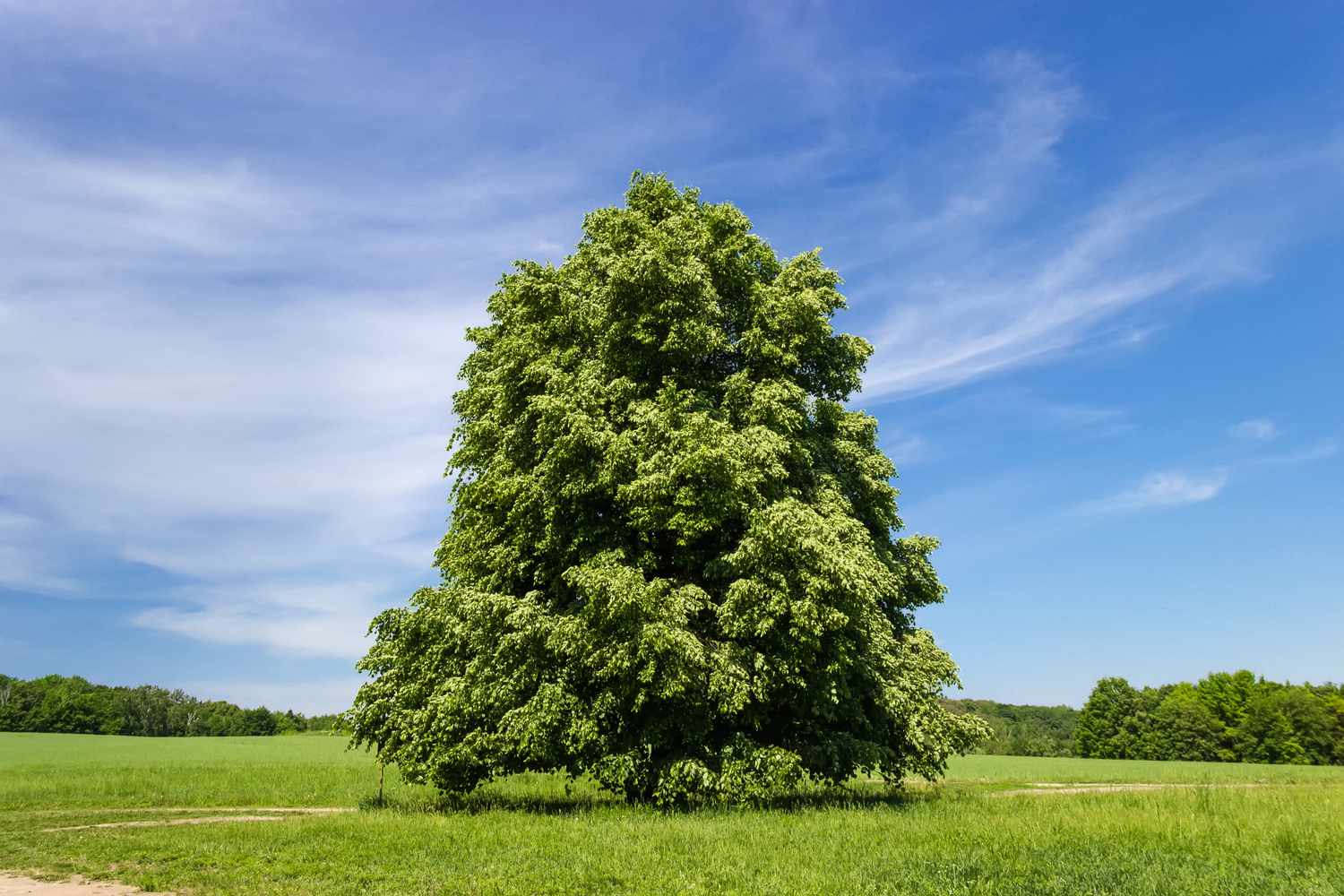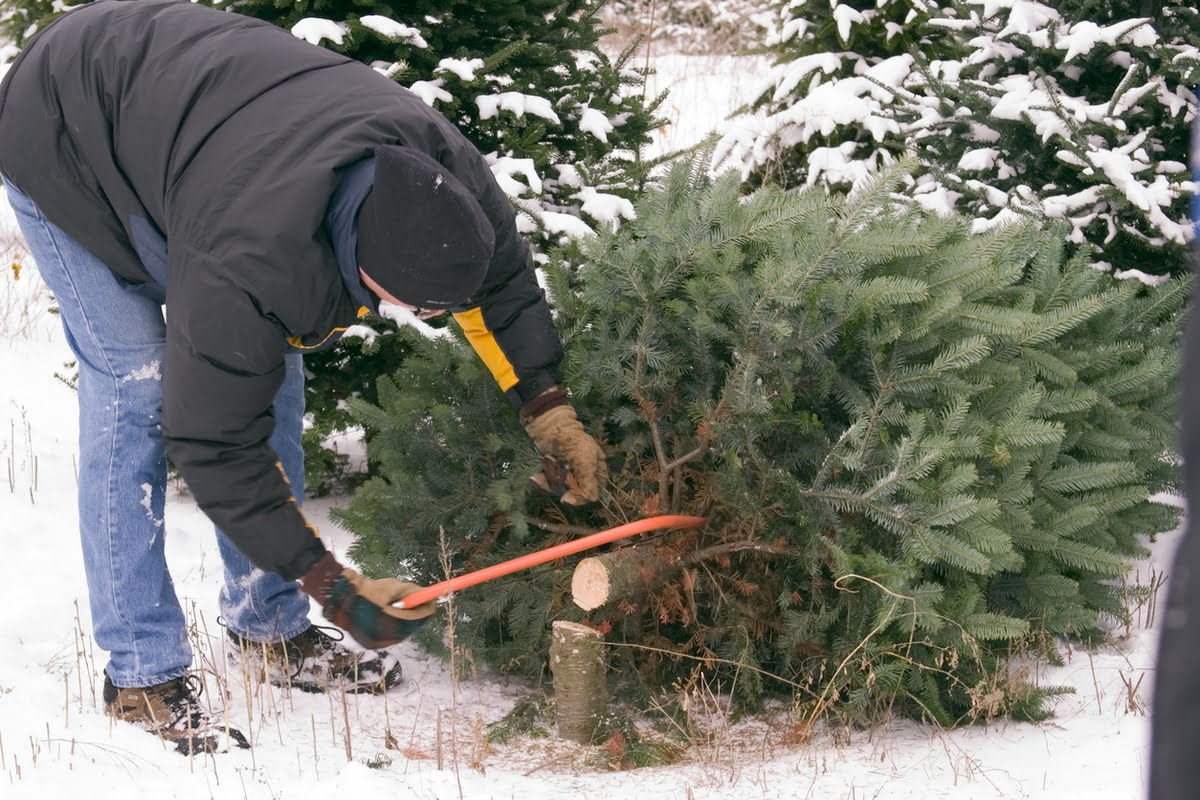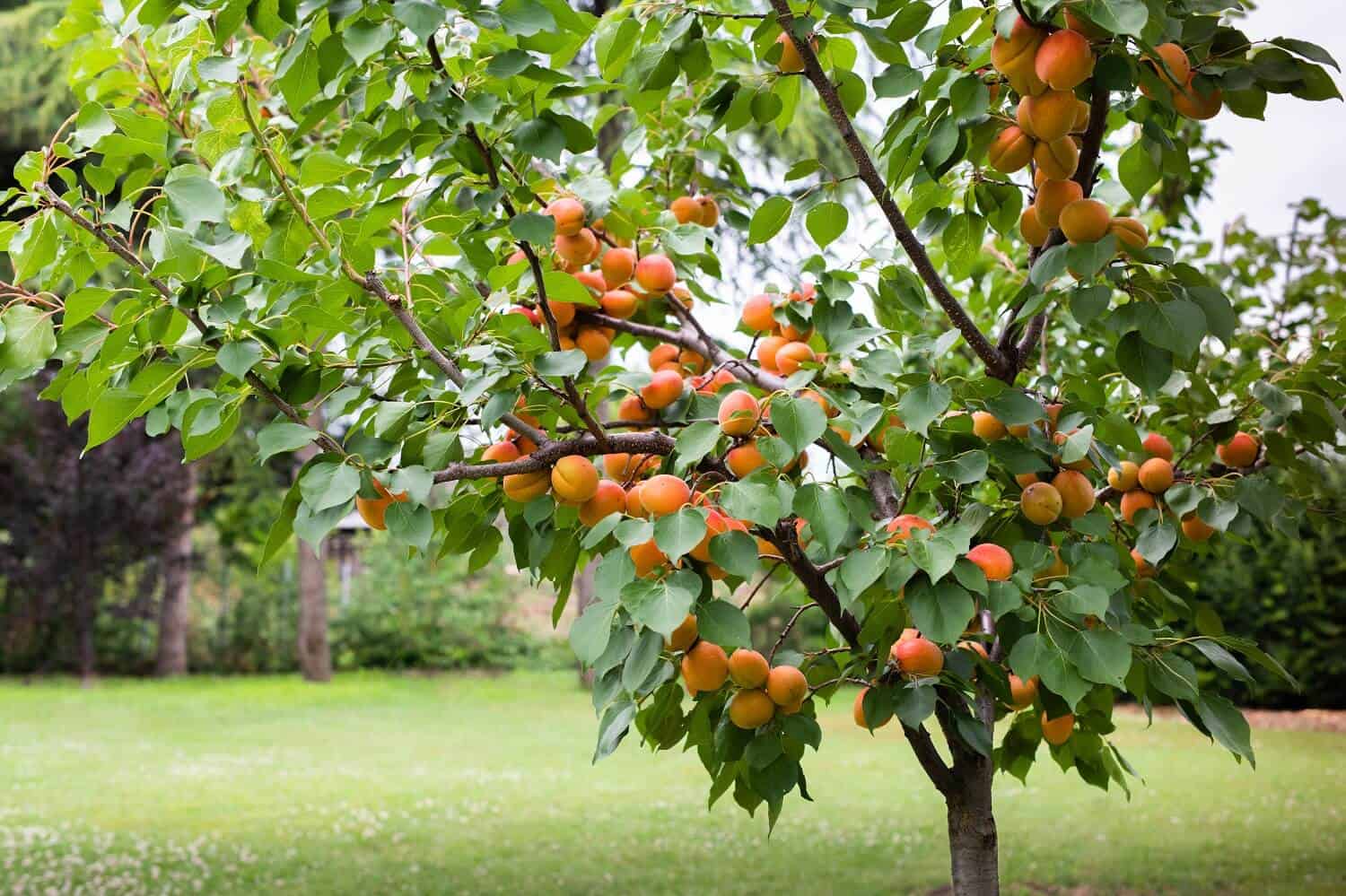Home>Types of Gardening>Ornamental Gardening>What Is Tree Planting
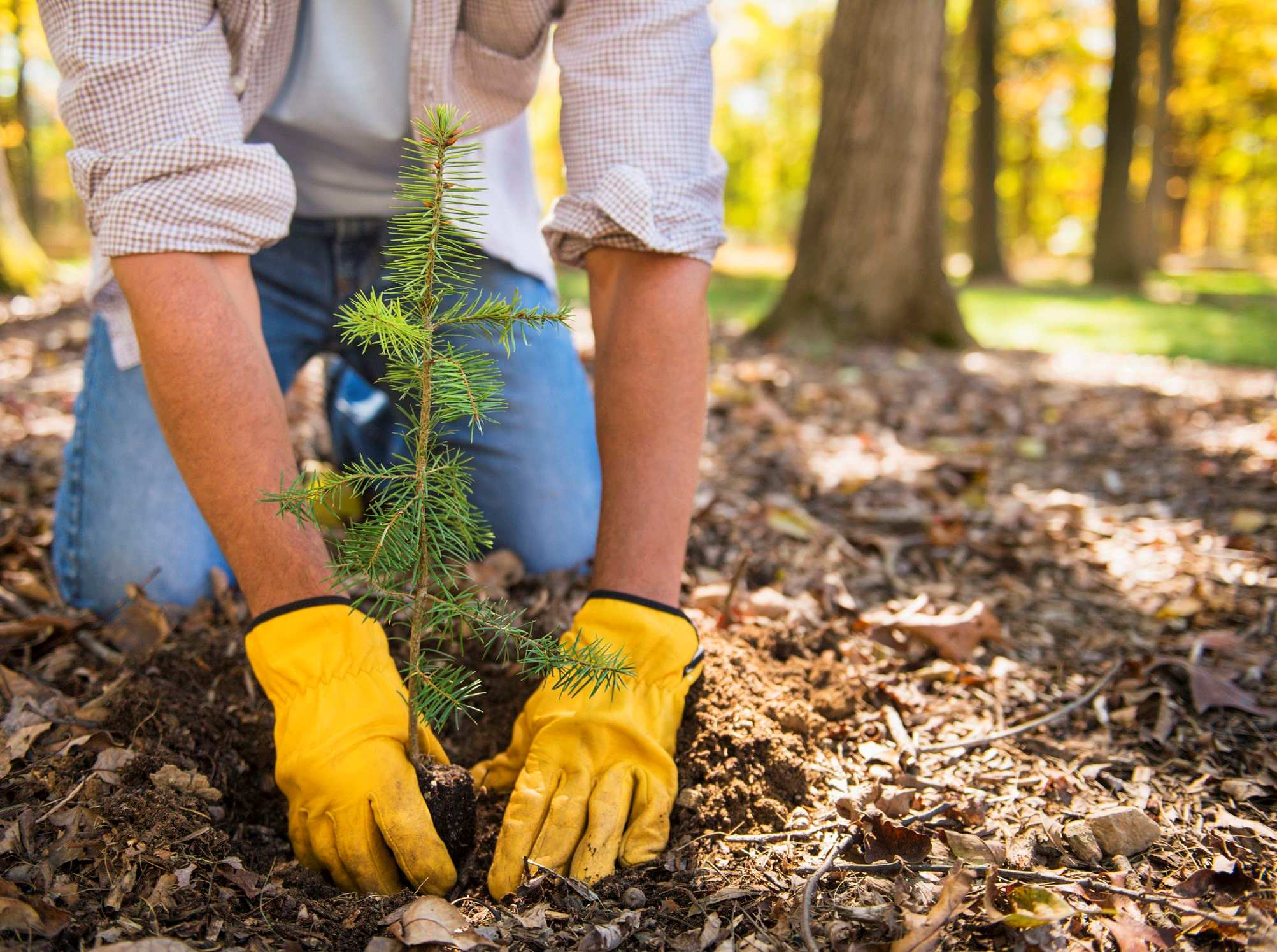

Ornamental Gardening
What Is Tree Planting
Modified: January 22, 2024
Discover the benefits and techniques of ornamental gardening with our comprehensive guide. Learn everything you need to know about tree planting and create a stunning garden.
(Many of the links in this article redirect to a specific reviewed product. Your purchase of these products through affiliate links helps to generate commission for Chicagolandgardening.com, at no extra cost. Learn more)
Table of Contents
- Introduction
- Benefits of Tree Planting
- Environmental Impact of Tree Planting
- Economic Benefits of Tree Planting
- Social Benefits of Tree Planting
- Steps to Successful Tree Planting
- Choosing the Right Trees for Planting
- Tree Planting Techniques and Tips
- Tree Maintenance and Care
- Tree Planting Programs and Initiatives
- Conclusion
Introduction
Welcome to the world of ornamental gardening, where nature’s beauty and human creativity converge. Ornamental gardening is the art of creating visually stunning and aesthetically pleasing landscapes using various flowering plants, trees, shrubs, and decorative elements. It is a passion shared by countless individuals who appreciate the transformative power of a well-designed garden.
Ornamental gardening is not only about creating a visually appealing environment; it is also about creating a haven for wildlife, fostering a sense of well-being, and contributing to the overall health of our planet. By carefully selecting and arranging plants, ornamental gardeners can create a harmonious balance between nature and human intervention.
Whether you have a small backyard plot or a sprawling estate, the principles of ornamental gardening can be applied on any scale. From delicate flowers to majestic trees, the possibilities are endless when it comes to designing a beautiful and functional garden space.
In this article, we will explore the art of ornamental gardening in depth, uncovering practical tips, expert advice, and the numerous benefits associated with this timeless practice. From the environmental impact to the economic and social benefits, we will delve into every aspect of ornamental gardening, revealing its profound impact on both individuals and communities.
So, whether you’re a seasoned gardener looking to expand your knowledge or a curious beginner eager to embark on a new horticultural adventure, join us as we unlock the secrets of ornamental gardening and celebrate the beauty of nature in all its splendid forms.
Benefits of Tree Planting
Tree planting is not just a simple act of adding greenery to our surroundings; it is a powerful tool for enhancing our environment and improving our overall well-being. The benefits of tree planting are far-reaching, impacting the environment, economy, and social fabric of communities. Let’s explore some of the key benefits:
- Environmental Impact: Trees play a crucial role in mitigating climate change by absorbing carbon dioxide and releasing oxygen through the process of photosynthesis. By acting as carbon sinks, trees help reduce greenhouse gases in the atmosphere, contributing to climate stabilization. Additionally, they help to combat urban heat island effect by providing shade and cooling the environment. Trees also improve air quality by filtering pollutants and releasing clean oxygen.
- Economic Benefits: Tree planting has numerous economic advantages. Trees increase property values, making neighborhoods more attractive to potential buyers. Shaded areas created by trees can help reduce energy consumption by providing natural cooling in the summer and acting as windbreaks in the winter. Additionally, trees can lower healthcare costs by improving air quality and promoting a healthier living environment.
- Social Benefits: Trees have a profound impact on the social well-being of communities. They create inviting outdoor spaces for relaxation, recreation, and social gatherings. Parks and green spaces with trees foster a sense of community pride and encourage physical activity. Trees also provide habitat and food sources for birds, insects, and other wildlife, creating opportunities for educational and recreational activities centered around nature.
Overall, tree planting is a powerful tool for environmental conservation, economic prosperity, and social cohesion. By recognizing and appreciating these benefits, individuals and communities can actively contribute to a greener and more sustainable future.
Environmental Impact of Tree Planting
Tree planting has a profound and positive impact on the environment. Trees are often referred to as the lungs of the Earth, as they play a crucial role in maintaining a healthy ecosystem. Let’s explore some of the key environmental benefits of tree planting:
- Carbon Sequestration: One of the most significant contributions of trees to the environment is their ability to absorb carbon dioxide, a leading greenhouse gas responsible for global warming. Through the process of photosynthesis, trees take in carbon dioxide and release oxygen, effectively reducing the concentration of this harmful gas in the atmosphere. By planting more trees, we can help mitigate climate change and stabilize our planet’s temperature.
- Air Quality Improvement: Trees act as natural air filters by trapping and absorbing pollutants from the air. They remove particulate matter, such as dust and smoke, as well as harmful gases like sulfur dioxide and nitrogen dioxide. By improving air quality, trees contribute to healthier living environments and reduce the risk of respiratory illnesses in humans and animals.
- Soil Conservation: Tree roots help to anchor the soil, preventing erosion and promoting stability. They form a network of underground structures that hold the soil together, especially in areas prone to erosion, such as riverbanks and hillsides. This prevents sediment runoff into water bodies, improving water quality and protecting aquatic ecosystems.
- Biodiversity Support: Trees provide vital habitat and food sources for a wide range of plant and animal species. By planting diverse native tree species, we can help support local biodiversity and create ecological corridors that facilitate the movement of wildlife. Trees play a critical role in maintaining the balance of ecosystems, ensuring the survival of both flora and fauna.
These are just a few examples of the environmental impact of tree planting. By recognizing the immense value and role of trees in our environment, we can actively participate in conservation efforts and contribute to the well-being of our planet for generations to come.
Economic Benefits of Tree Planting
Tree planting not only has environmental benefits but also has a significant impact on the economy. The economic advantages of tree planting extend beyond just the beautification of landscapes. Let’s explore some of the key economic benefits of tree planting:
- Increase in Property Value: Trees have been shown to increase property values by enhancing the aesthetic appeal of neighborhoods. Homes with well-maintained trees and green spaces are often more desirable to potential buyers. The shade provided by trees can also reduce energy consumption for cooling, further adding value to properties.
- Energy Savings: Trees strategically planted around residential and commercial buildings can provide natural shade, reducing the need for air conditioning during warm months. By providing cooling effects, trees can help lower energy consumption and utility bills. Additionally, trees act as windbreaks, reducing heating costs during colder seasons.
- Job Creation and Economic Growth: The tree planting and care industry provides employment opportunities for arborists, landscape architects, and tree service professionals. The demand for these services creates job opportunities and contributes to local and national economies. Tree planting initiatives can also drive tourism and attract visitors to areas with beautiful and well-maintained green spaces.
- Healthcare Cost Reduction: Trees help improve air quality by filtering pollutants and releasing clean oxygen. This has a direct impact on human health, reducing the risk of respiratory issues and related healthcare costs. Areas with a higher tree density have been shown to have lower rates of respiratory illnesses and other air pollution-related diseases.
The economic benefits of tree planting go beyond monetary value. Trees contribute to creating sustainable and resilient communities that attract residents, businesses, and investment. By investing in tree planting initiatives, we can stimulate economic growth, improve property values, and create a healthier and more prosperous environment for all.
Social Benefits of Tree Planting
Tree planting has numerous social benefits that go beyond the visual appeal and environmental impact. Trees play a vital role in enhancing the social fabric of communities and improving the overall well-being of individuals. Let’s explore some of the key social benefits of tree planting:
- Community Gathering Spaces: Trees create beautiful outdoor spaces that encourage community members to come together. Parks and green areas with trees provide gathering spaces for recreational activities, picnics, and social events. These communal spaces foster a sense of belonging, promote social interaction, and strengthen community bonds.
- Enhancing Mental Well-being: Spending time in nature, surrounded by trees, has a positive impact on mental health and well-being. Studies have shown that exposure to green spaces reduces stress, anxiety, and symptoms of depression. The tranquility and beauty of tree-filled environments create a calming effect, offering a refuge from the demands of everyday life.
- Education and Learning Opportunities: Trees provide valuable educational opportunities for children and adults alike. Urban forests and arboretums offer educational programs, workshops, and guided tours that teach about biodiversity, natural habitats, and the importance of conservation. Tree planting initiatives in schools allow students to participate in hands-on learning experiences and develop a deeper appreciation for nature and the environment.
- Biodiversity and Wildlife Support: Trees provide habitat and food sources for a wide variety of bird species, insects, and other wildlife. Urban areas with trees create havens for biodiversity, allowing for the coexistence of multiple species in a harmonious ecosystem. Observing and interacting with nature-rich environments can inspire a connection to the natural world and promote environmental stewardship.
The social benefits of tree planting extend beyond individual experiences. The presence of trees in neighborhoods and urban areas enhances the overall quality of life for residents. They contribute to a sense of pride in the community, create opportunities for outdoor activities, and promote healthier and happier living environments.
Steps to Successful Tree Planting
Tree planting is a rewarding and impactful endeavor, but it requires careful planning and execution for successful results. To ensure the health and longevity of your newly planted trees, follow these essential steps:
- Choose the Right Tree Species: Consider the environmental conditions, such as soil type, sunlight availability, and climate, when selecting tree species. Choose native trees that are well-suited to your area, as they are more likely to thrive and require less maintenance.
- Site Selection: Carefully choose the location for planting your tree. Consider factors such as available space, proximity to buildings or power lines, and the tree’s eventual size at maturity. Ensure that the planting site has proper drainage and adequate access to sunlight.
- Prepare the Planting Hole: Dig a hole that is wide and deep enough to accommodate the tree’s root ball. Remove any weeds, rocks, or debris from the hole. Avoid digging the hole too deep, as it can cause the tree to sink or become unstable.
- Handle the Roots with Care: Gently loosen and spread out the roots before placing the tree in the planting hole. Avoid bending or breaking the roots. Ensure that the tree is positioned straight and at the proper depth.
- Backfill and Mulch: Fill the planting hole with soil, gently firming it around the roots. Apply a layer of mulch around the base of the tree, leaving a gap around the trunk to prevent moisture buildup. Mulch helps retain moisture, suppress weeds, and regulate soil temperature.
- Water and Regularly Maintain: Water the tree thoroughly after planting, and continue watering regularly during the establishment period. Monitor the moisture levels and adjust watering as needed. Regularly inspect the tree for signs of pests or diseases and take appropriate measures for timely treatment.
- Provide Support if Necessary: Young trees may require staking or support to ensure upright growth. Use soft material to tie the tree to the stake, allowing for some movement and growth. Monitor the tree’s stability and remove the support once it becomes self-supporting.
- Monitor Growth and Prune as Needed: Regularly observe the growth and development of the tree. Prune as necessary to remove diseased, damaged, or crossed branches. Pruning helps maintain the tree’s overall health and shape.
By following these steps, you can establish a strong foundation for your newly planted trees and increase their chances of flourishing for years to come. Remember, proper care and maintenance are essential for the long-term health and beauty of your trees.
Choosing the Right Trees for Planting
When it comes to tree planting, selecting the right tree species is crucial for successful growth and overall landscape enhancement. The process of choosing trees involves considering various factors such as climate compatibility, soil conditions, space availability, and desired aesthetics. Here are some key considerations to help you choose the right trees for planting:
- Climate Compatibility: Consider your climate zone and choose tree species that are well-adapted to the specific climatic conditions in your area. Some trees thrive in cooler climates, while others are more suitable for warmer regions. Assess the temperature ranges, annual rainfall, and frost tolerance required for the tree species you are considering.
- Soil Conditions: Evaluate the soil type and characteristics of your planting site. Some trees prefer well-drained soils, while others can tolerate wet or heavy clay soils. Consider the soil pH level and fertility requirements of the tree species to ensure compatibility with your site conditions.
- Space Availability: Assess the available space for tree planting, both above and below ground. Consider the mature size of the tree and ensure that it has enough room to grow without obstruction from buildings, power lines, or other trees. Avoid planting trees too close to structures to prevent potential damage over time.
- Aesthetics and Purpose: Determine the desired aesthetic appeal and purpose of the tree. Consider factors such as leaf color, flower type, and fruit production for visual impact. Determine if the tree will be used for shade, privacy screening, windbreak, or attracting wildlife. Choose trees that align with your desired goals and functionalities.
- Native and Non-Invasive Species: Consider planting native tree species that are indigenous to your region. Native trees are well-adapted to the local ecosystem and tend to require less maintenance. Avoid planting invasive species that can overtake native plants and disrupt natural habitats.
Consult with local arborists, horticulturists, or extension services to gain insights into suitable tree species for your specific location. These experts can provide valuable guidance based on your region’s environmental conditions and specific requirements.
By carefully considering these factors and making informed choices, you can ensure that the trees you plant will thrive in their new environment, contributing to the beauty, health, and sustainability of your landscape.
Tree Planting Techniques and Tips
When it comes to tree planting, employing proper techniques and following essential tips is crucial for the successful establishment and growth of your trees. Here are some valuable techniques and tips to ensure a successful tree planting process:
- Planting Hole Preparation: Dig a planting hole that is wider and shallower than the root ball of the tree. This allows the roots to spread easily in the loosened soil. Avoid digging the hole too deep, as it can cause the tree to sink or become unstable.
- Handle Roots with Care: Gently loosen and untangle any matted or circling roots before planting. Avoid bending or breaking the roots, as this can hinder the tree’s ability to establish itself. Spread the roots out in the planting hole to encourage outward growth.
- Proper Backfilling: Backfill the hole with the original soil or a mixture of soil and compost. Avoid using fertilizer directly in the planting hole, as it can burn the young roots. Ensure that the soil is firmly but gently packed around the roots to eliminate air pockets.
- Mulching: Apply a layer of organic mulch around the base of the tree, leaving a gap around the trunk to prevent moisture buildup. Mulch helps retain soil moisture, suppress weeds, and regulate soil temperature. Avoid piling mulch against the trunk, as it can lead to rot or create a habitat for pests.
- Watering: Newly planted trees need consistent and adequate watering to establish their root systems. Water deeply and infrequently, ensuring that the soil is moist but not waterlogged. Use a slow and deep watering technique to encourage deep root growth. Adjust the watering frequency based on weather conditions and soil moisture levels.
- Staking: Evaluate whether the tree requires staking to provide stability. Use flexible tree ties or straps to secure the tree to stakes, allowing some movement for natural trunk development. Remove the stakes and ties once the tree becomes self-supporting, typically within the first year or two.
- Pruning: Limit pruning to the removal of dead, damaged, or crossing branches. Pruning should be minimal during the first few years to allow the tree to focus on establishing a strong root system. Consult a professional arborist for guidance on pruning techniques.
- Regular Monitoring: Monitor the tree regularly for signs of stress, pests, diseases, or other issues. Look for wilting leaves, discoloration, or unusual growth patterns. Address any problems promptly to prevent further damage and ensure the tree’s healthy development.
Remember, every tree species has its own unique requirements, so it is important to research and understand the specific needs of the tree you are planting. By implementing these techniques and tips, you can provide the best possible conditions for the tree to establish itself and thrive in its new environment.
Tree Maintenance and Care
Proper maintenance and care are essential for the long-term health, vitality, and beauty of trees. By implementing effective maintenance practices, you can ensure that your trees thrive and provide their numerous benefits for years to come. Here are some key tree maintenance and care practices to follow:
- Regular Watering: Adequate and consistent watering is crucial for the establishment and health of trees, especially during dry spells or periods of drought. Deep, slow watering encourages deep root growth and helps trees withstand harsh environmental conditions. Monitor soil moisture levels and adjust watering frequency accordingly.
- Pruning: Regular pruning is essential for maintaining the structural integrity and aesthetics of trees. Prune dead, diseased, or damaged branches to prevent them from becoming entry points for pests or diseases. Additionally, thinning the crown can improve airflow and light penetration, promoting overall tree health.
- Fertilizing: Trees in urban environments often benefit from supplemental fertilization to compensate for nutrient deficiencies in the soil. Soil tests can help determine nutrient requirements, and appropriate fertilizers can be applied accordingly. However, it’s important to use fertilizers sparingly and follow recommended application rates to prevent over-fertilization.
- Managing Pests and Diseases: Regularly inspect trees for signs of pests, diseases, or other stressors. Identifying problems early allows for timely intervention and treatment. Consult with a professional arborist for proper diagnosis and treatment options. Implementing cultural practices, such as maintaining soil health and promoting tree vigor, can also help prevent pest and disease issues.
- Mulching: Apply a layer of organic mulch around the base of the tree, extending out to the tree’s drip line. Mulch helps regulate soil temperature, retain moisture, and suppress weeds. However, ensure that the mulch is not piled against the trunk, as it can create a moist environment conducive to rot or fungal growth.
- Protecting from Mechanical Damage: Take measures to protect trees from mechanical damage, such as lawn mower strikes or construction activities. Install protective barriers or fencing around young and vulnerable trees. Avoid using weed trimmers near the base of trees and ensure that heavy machinery does not compact the soil around the root zone.
- Professional Inspection and Maintenance: Periodic inspections by professional arborists are essential for the health and safety of trees. Arborists can assess tree health, identify potential hazards, and provide recommendations for proper care. They have the expertise and tools to perform tree maintenance tasks safely.
Remember that each tree species may have specific care requirements. Understanding the specific needs of your trees is crucial for their long-term health. With regular maintenance and proper care, you can ensure that your trees will thrive, enhance your landscape, and provide a range of benefits for years to come.
Tree Planting Programs and Initiatives
Tree planting programs and initiatives play a vital role in promoting environmental conservation, community engagement, and enhancing the overall well-being of society. These programs, often led by governments, nonprofits, and community organizations, aim to increase tree cover, restore ecosystems, and raise awareness about the importance of trees. Here are some notable tree planting programs and initiatives:
- Arbor Day: Arbor Day is a widely recognized tree planting initiative celebrated around the world. It is a day dedicated to planting and caring for trees, raising awareness about their importance, and promoting environmental stewardship. Many communities organize tree planting events and educational activities on Arbor Day.
- Reforestation Efforts: Reforestation programs focus on replanting trees in areas that have experienced deforestation or significant tree loss. These initiatives aim to restore ecosystems, combat climate change, and provide habitat for wildlife. Reforestation efforts often involve community involvement, indigenous partnerships, and sustainable land management practices.
- Urban Greening: Urban greening initiatives focus on increasing tree cover and green spaces in cities and urban areas. These programs aim to enhance air quality, reduce urban heat island effect, and improve the overall quality of life for residents. Many cities have implemented tree planting programs, offering incentives to homeowners and businesses to plant trees on their properties.
- Community Tree Planting: Community tree planting initiatives bring together volunteers, residents, and organizations to plant trees in public spaces, schools, parks, and neighborhoods. These programs foster a sense of community pride, engagement, and stewardship while increasing tree cover in areas that need it the most.
- Agroforestry Projects: Agroforestry initiatives combine tree planting with agriculture to create sustainable and productive systems. Agroforestry provides numerous benefits, such as improved soil health, increased biodiversity, and additional income streams for farmers. These projects aim to strike a balance between tree growth, crop production, and environmental conservation.
- Corporate Social Responsibility (CSR) Programs: Many companies and organizations embrace tree planting as part of their CSR initiatives. These programs focus on offsetting carbon emissions, minimizing environmental impact, and contributing to local communities. Corporate-sponsored tree planting projects often involve employee participation, community partnerships, and long-term monitoring and maintenance.
These tree planting programs and initiatives demonstrate the collective effort and commitment towards environmental sustainability and community well-being. By participating in or supporting these initiatives, individuals, organizations, and communities can actively contribute to a greener and more sustainable future for generations to come.
Conclusion
Ornamental gardening and tree planting are more than just hobbies or aesthetic pursuits; they are powerful tools for environmental conservation, economic prosperity, and social well-being. Through the art of ornamental gardening, we can create visually stunning landscapes that not only please the eye but also contribute to the overall health of our planet.
By planting trees, we invest in a sustainable future. Trees provide numerous benefits, from mitigating climate change and improving air quality to enhancing property values and fostering community engagement. They create inviting spaces for relaxation, recreation, and social gatherings. Trees support biodiversity, provide habitat for wildlife, and offer opportunities for educational and recreational activities centered around nature.
To ensure successful tree planting, it is important to choose the right tree species, prepare the planting site properly, and provide ongoing care and maintenance. By following industry best practices and implementing proper techniques, we can give our trees the best chance to thrive and flourish for years to come.
Moreover, various tree planting programs and initiatives have emerged to address the pressing need for reforestation, urban greening, and environmental conservation. These programs engage communities, foster partnerships, and inspire collective action towards creating greener and more sustainable environments.
Whether you’re a seasoned gardener or a beginner starting your journey in ornamental gardening and tree planting, the possibilities are limitless. By embracing these practices, you can make a positive impact on the environment, enhance the beauty of your surroundings, and create spaces that promote well-being and connection with nature.
So, let us continue to embrace the art of ornamental gardening, plant trees, and actively participate in tree planting programs and initiatives. Together, we can create a greener, healthier, and more sustainable world for ourselves and future generations to enjoy.



